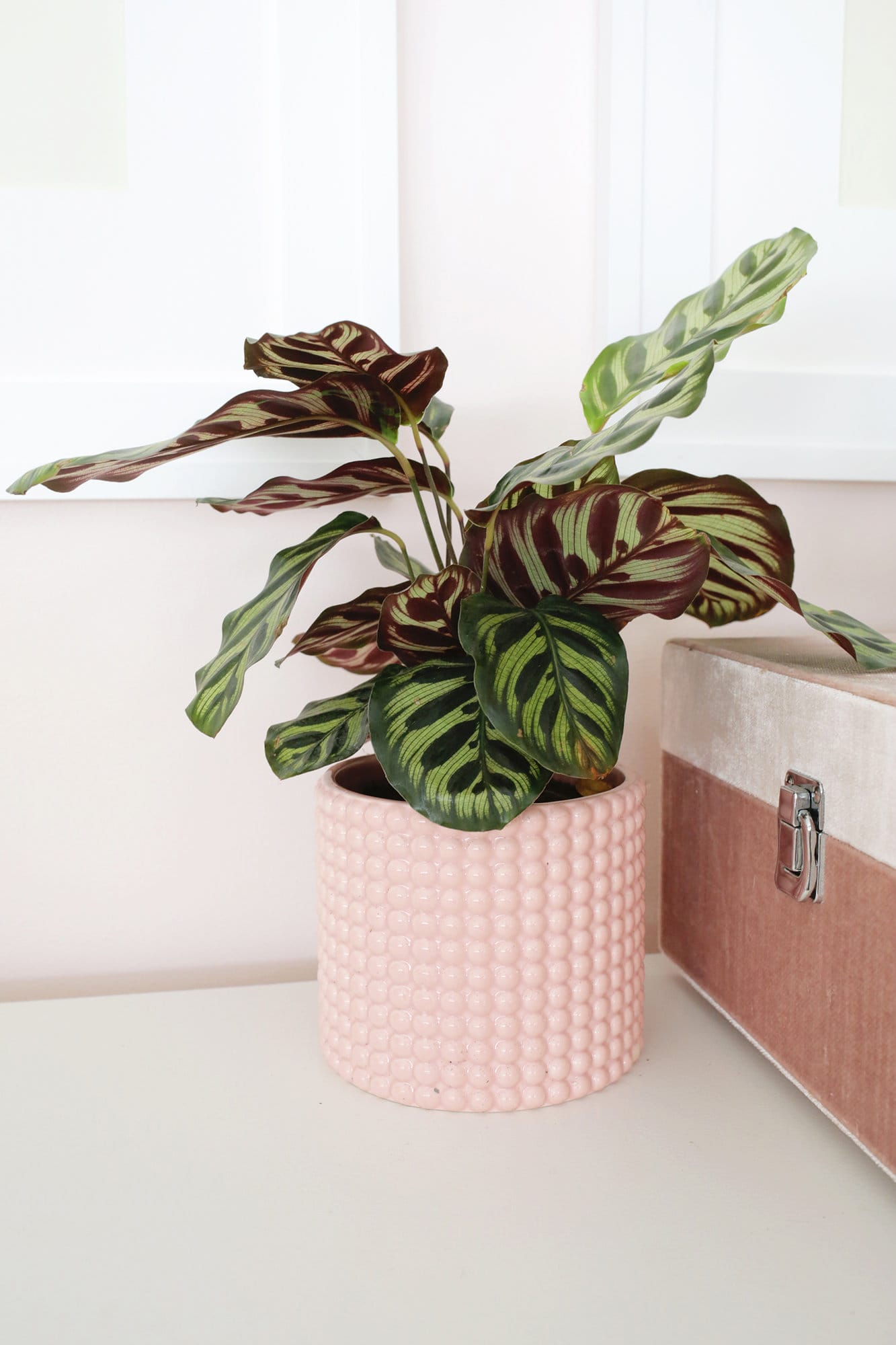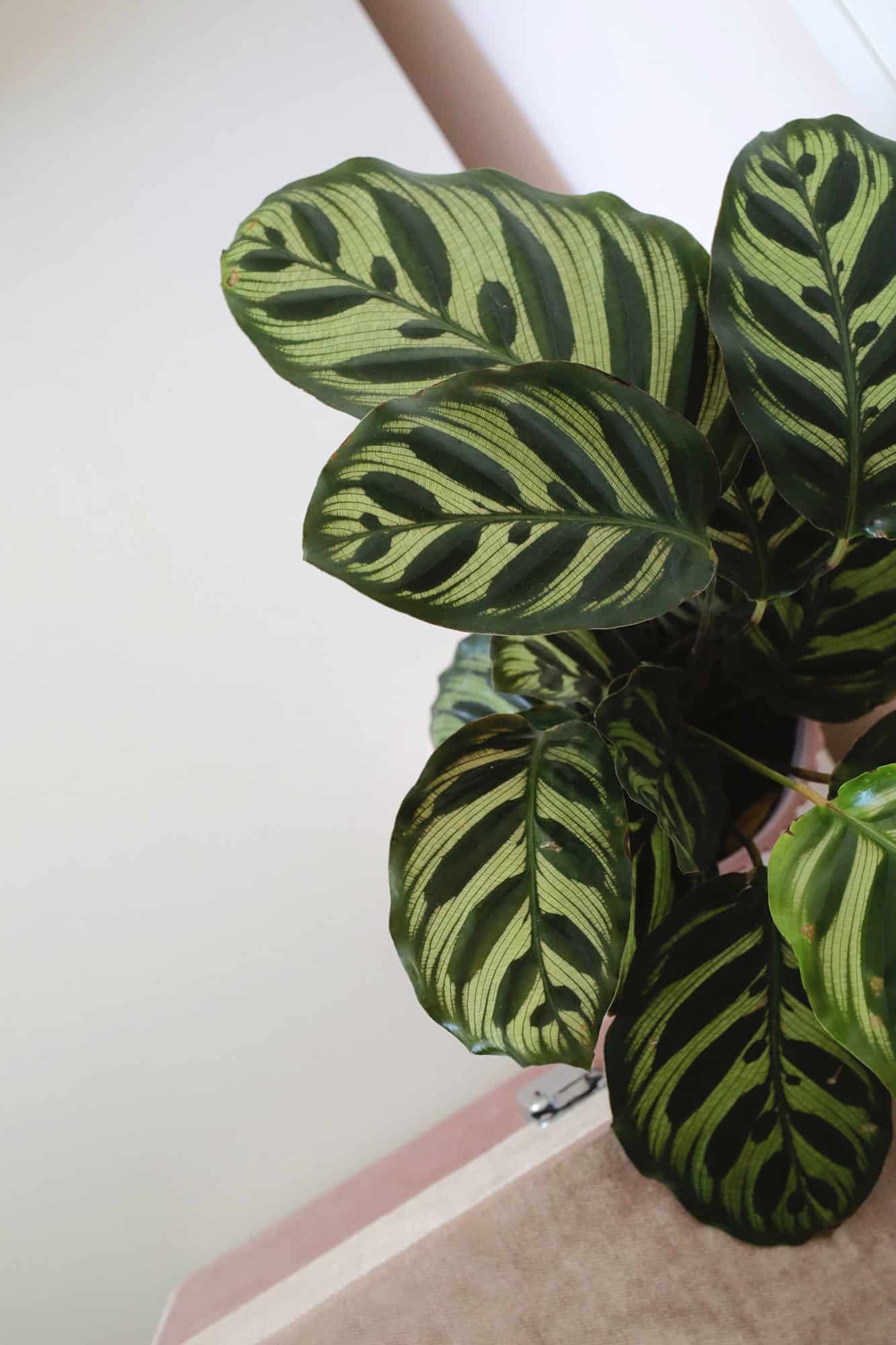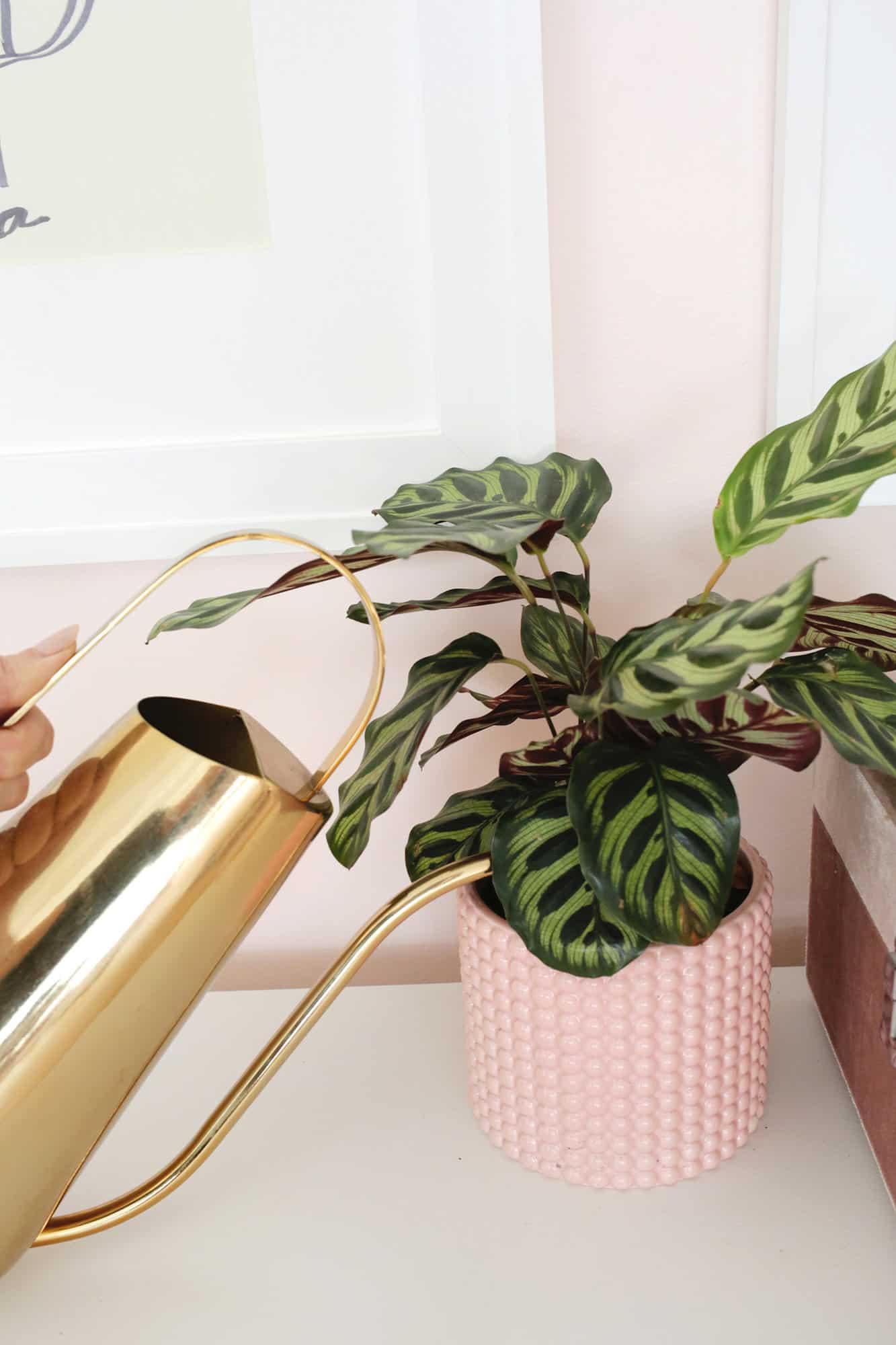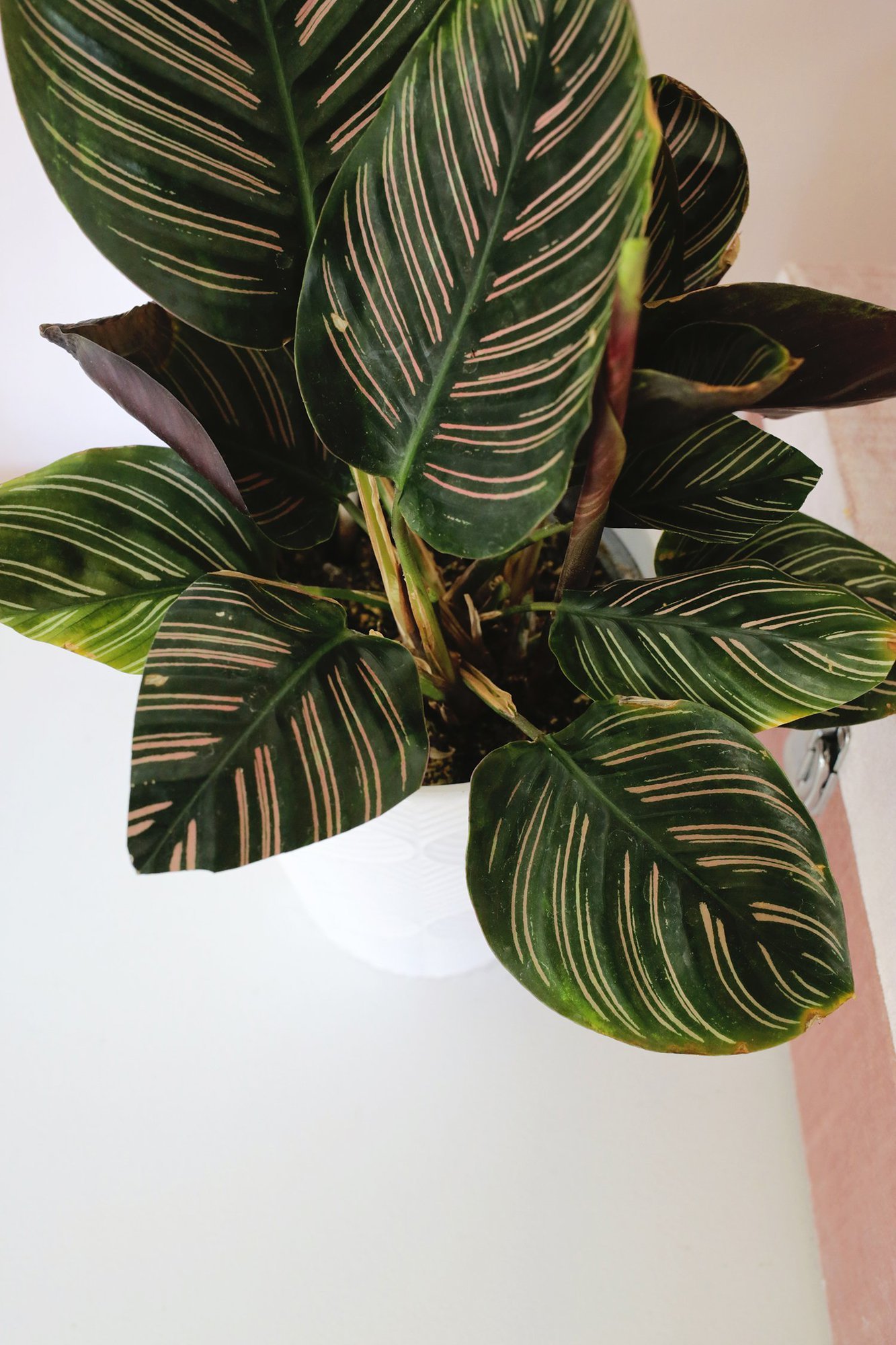Calathea plants are a popular houseplant that are relatively easy to care for and known for their eye-catching patterns. They are a great choice for households with pets and kids as they are a nontoxic variety, and their unique leaf moving ability also sets them apart from the crowd.
Calathea plants are native to the tropical Americas and have also been referred to as prayer plants because of their special ability to move throughout the day. This unique trait is called nyctinasty and the Calathea can lower its leaves during the day to receive more light and pull them up at night.
They are grown outside in tropical climates, but are usually houseplants in other locations as they cannot tolerate the cold. Because of the bold veins and stripes on Calathea plants, they have also been called peacock plants, zebra plants, or rattlesnake plants.
Related: Learn to Care for Pilea Plants, Monstera Plants, Fiddle Leaf Figs, Golden Pothos, Snake Plants, Rubber Trees, Spider Plants, and String of Pearls Plants.


Popular types of Calathea plants
- Calathea Makoyana: Often referred to as the peacock plant, this variety boasts dark green leaves with cream, purple, and pink tones with red stems.
- Calathea Louisae: These have dark green leaves with wavy edges and lighter green patches down the midvein.
- Calathea Lancifolia: Also known as the rattlesnake plant, this variety has slender green leaves with dark green blotches and a purple underside.
- Calathea White Fusion: This beautiful plant is the queen of the Calathea variety and has variegated shades of green, white, and even lilac in its leaves.
- Pin Stripe Calathea Ornata: This plant boasts dark green glossy leaves with pink pinstripes.

How often should I water Calathea plants?
Calatheas like a lot of water but don’t want to sit in soggy soil. You’ll want the top 1-2″ of soil to be dry before watering again, so stick your finger into the soil every so often to see if you can still feel moisture. You can also use a pot with drainage holes to let out excess water.
Calathea plants are sensitive to the chlorine and fluoride in tap water, so using filtered or distilled or rainwater is best if possible. If you only have tap water, you can set the tap water out overnight in your watering jug to help the chlorine dissipate before watering.
Humidity and temperature for Calathea plants
Since Calatheas come from a more humid environment, they thrive at a humidity level of at least 50%. You can add more humidity to your home with a humidifier or you can put some pebbles and water in a tray and simply place your pot on top (make sure the water level sits below the top of the pebbles). The pot will sit on top of the stones and the water in the tray will evaporate and create humidity around the plant.
Bathrooms are a great spot for Calatheas (as long as it has the proper light for them) as they are a more humid environment.
70 to 85 degrees Fahrenheit is the ideal temperature for Calathea plants and they won’t do well if it drops below 60 degrees.
How much sunlight do Calathea plants need?
Calatheas love to be in medium to bright indirect light. They can handle low light situations well, but their color and pattern may not be as vivid as it would be with more light. As a general rule, the darker the leaf on your variety of Calathea, the lower light requirement it needs to thrive.
You’ll want to stay away from direct light on your Calathea as that can damage the leaves and fade their color.
What’s the best soil for Calathea plants?
You’ll want a well-draining soil mix like this to keep your plant from getting too waterlogged.

Should I fertilize my Calathea plant?
It’s a good idea to fertilize your Calathea once a month to encourage growth. You can use a liquid fertilizer at half strength during the warmer growing season months and skip fertilizing in the winter when the growth is much slower.
Pruning Calathea plants
You won’t need to do much pruning on your Calathea plant! Just use sharp scissors or pruning shears to remove dead leaves or stems as they appear to keep your plant looking tidy.
Diagnosing common problems
- Brown leaf tips: Tap water can cause leaf tips to brown. If watering with tap water, dechlorinate your tap water by letting it sit out overnight in your watering can before watering.
- Yellowing leaves: Could be a sign of overwatering. Try letting the soil dry out more between watering and make sure the top 2″ of soil is dry before watering again.
- Curled leaves or droopy stems: Probably a sign of underwatering, give your plant a good drink and see if it bounces back.
- Pests: If you see mealy bugs, fungus gnats, or spider mites, spray weekly with neem oil and wipe down the plant with water.
- Leaf spots: Could be a build up of minerals from tap water; try using distilled or filtered or rainwater to water with instead.

Propagating Calathea plants
The only way you can propagate a Calathea plant is by dividing a mature plant into smaller plants. You can remove the plant from its container and gently separate the roots into however many plants you would like. Repot and water the new plants in separate pots and they will eventually start to propagate themselves and fill in more over time.
Frequently Asked Questions
Are Calathea plants toxic to pets or kids?
Calatheas are a great choice for pet or kid households since they are a nontoxic plant.
Should I cut the brown parts off of my Calathea plants?
Any crispy brown areas of a Calathea won’t grow back green again, so if you have leaf with a lot of brown, use a sharp pair of scissors or shears to cut off the whole leaf at the stem.
